Festivities in Dénia
Las Fallas
Every year, between March 17th and 19th, the streets of Dénia are flooded with color, music and spectacular monuments to celebrate a unique festival in the world: Las Fallas. The celebration starts earlier. The last day of Las Fallas is Saint Joseph’s day (March 19th). Some pagan festivities celebrate the arrival of spring and flourish of life in this time. Each neighborhood has an organized group of people, the Casal faller, that works all year long holding fundraising parties and dinners, usually featuring the noted dish paella, a specialty of the region. Paella is made of rice, water, artichoke, nowadays chicken and before duck, rabbit, garrofón (a kind of large bean), tomate, salt and species. It is cooked in a flat pan named paella, spreading a thin layer of rice under a fire of orange firewood . Each casal faller produces a construction known as a falla which is eventually burned. A casal faller is also known as a comissió fallera and currently there are approximately 11 registered in Dénia. People wear typical dresses used in the festivities confectioned with expensive fabrics.
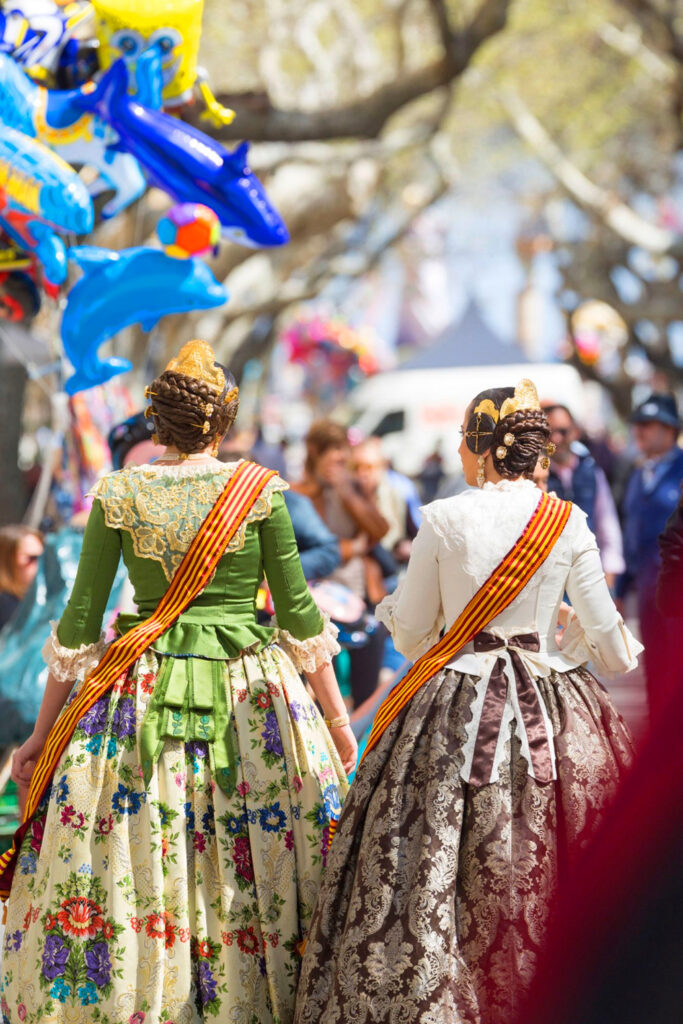
The different fallas groups parade at different occasions through the Calle Marqués de Campo, carrying colorful bouquets of flowers and dressed in the most solemn versions of their dresses.
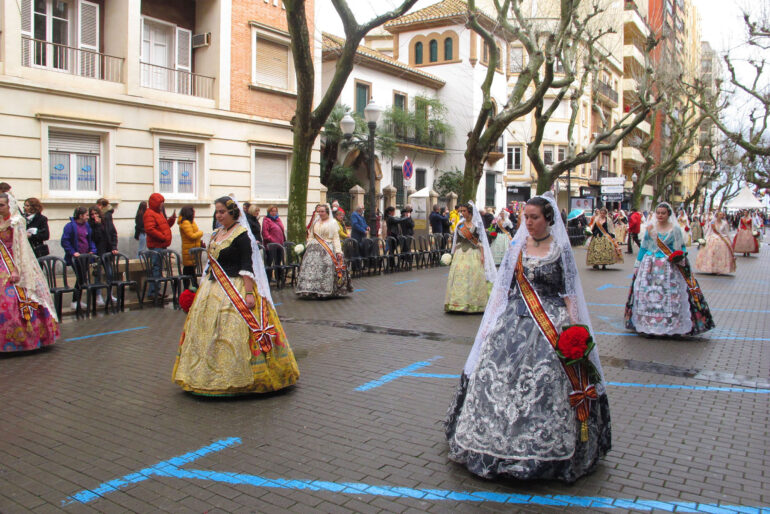
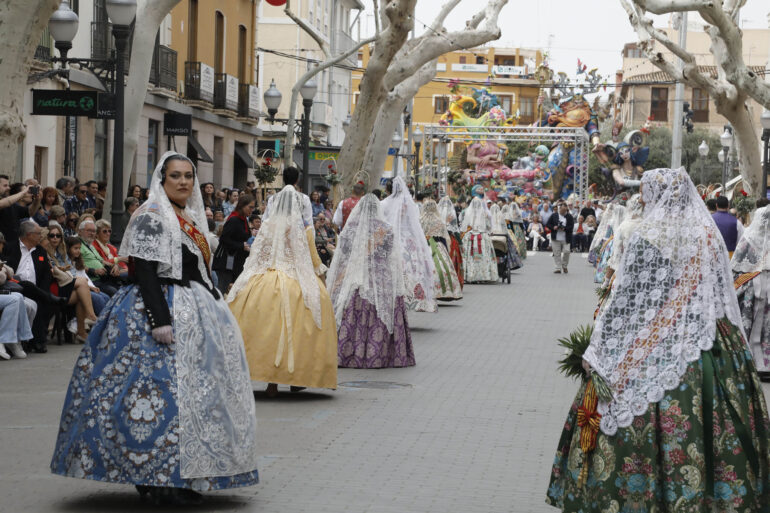
Parade on Marques de Campo street
The flowers are offered to the Mare de Deu (God’s Mother), departing from the port by Calle Marqués de Campo towards Diana Street to turn onto Magallanes street to the Plaza del Convento, where, at the gates of the Church of San Antonio, awaits the image of the Virgen de los Desamparados (Virgin of the Helpless).
Every day during celebrations there are mascletás (fireckarkers and fireworks) early in the morning at 8 am called the Despertá (to wake up people with their noise), and at 2:00 pm a lot of gunpowder is used making the city vibrate in a recital of explosions and smoke. The mascletás are one of the most anticipated events of the Fallas of Dénia. They are like a show of light and sound.
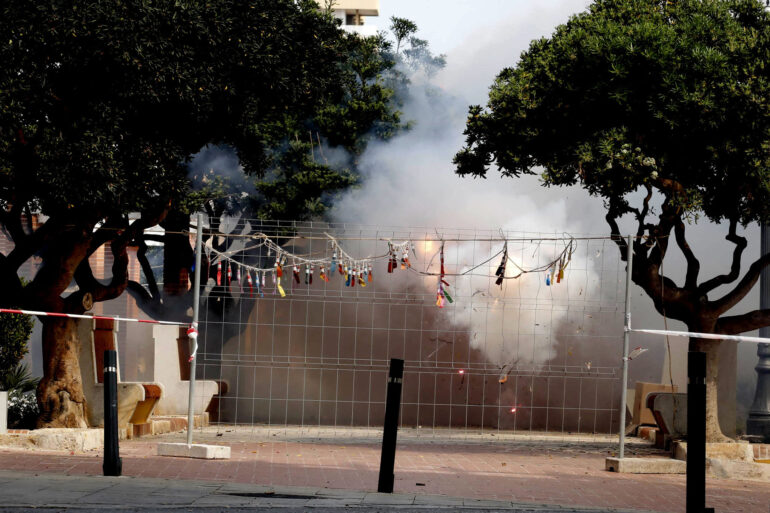
Mascletá
Las Fallas involve the confection of big figures made of paper maché or plastic that are exibited in each neighborhood during the festivities. It takes almost the whole year to design and built these monuments. They could be large or small depending on the economic possibilies of fhe community.
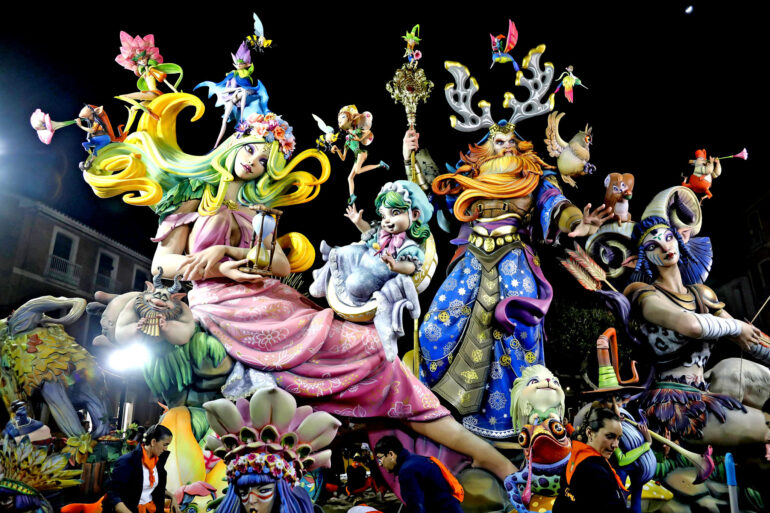

Fallas
On the night of March 19th they are burnt in an act called Nit Cremá (Burning night). It is a night in which all the monuments that have been placed on the streets for the occasion are burned. At around 8 p.m., with the ruling of the Fallera Mayor (a lady elected in a previous content for the occasion by the Local Board), the cremà of all the monuments that are planted in the city starts. A night in which the fire does its job and turns the Fallas monuments into ashes.
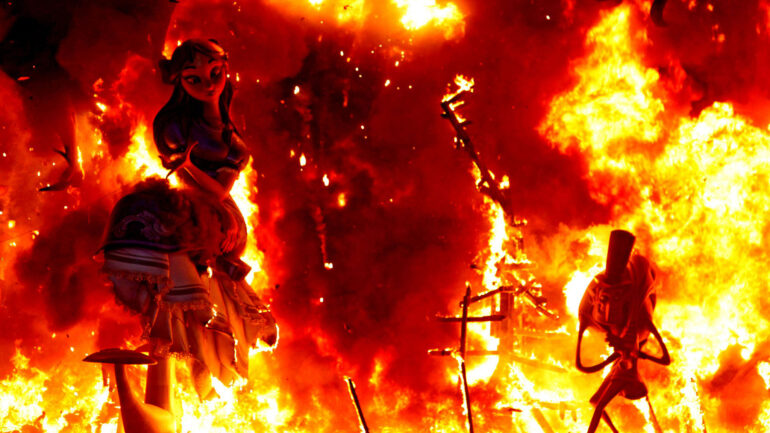
Cremá (Burning of the Fallas)
La Nit de la Cremá de Dénia is one of the most important events of the Fallas and is celebrated every year in the city during the holidays.
Its worth to live this unforgotable experience at least one in your life.
The Night of San Juan
The eve of the day of San Juan is June 23rd, so the magical night in which the beaches are filled with bonefires is the day before the San Juan day on June 24th. Originally the festival was associated with the celebration of the summer solstice, despite the fact that this is June 21st.
Among the most popular rituals, it stands out jump over the bonfire. In fact, it is very common, even tradition, to see the beaches full of groups of families and friends around bonfires. Fire usually stars in the coastal landscape, but in theory it is prohibited in the beach by the local authorities.
Moors and Christians
This festivity is celebrated in August. According to popular tradition the festivals commemorate the battles, combats and fights between Moors (i.e. former spaniard muslims) and Christians during the period known as Reconquista (Reconquest) in Spain (from the VIII through the XV centuries).
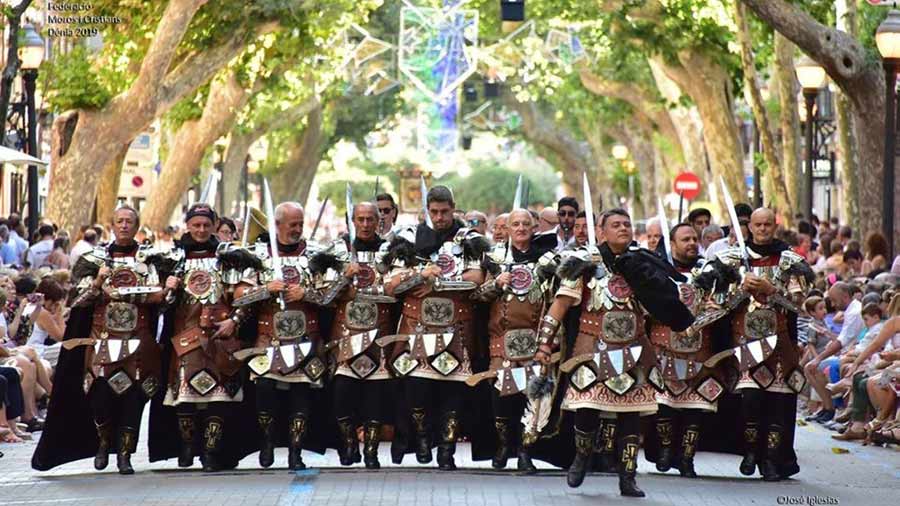
Moors and Christians Festival Parade
The festivals represent the capture of the city by the Moors and the subsequent Christian reconquering fight. The people who take part in the festival are usually enlisted in local associations called filaes (singular filà) or comparsas (companies that represent the Christian or Moor legions). Each side consists of various companies that carry out activities throughout the year, organizing spectacular parades during the days of the festival and spending a lot of gunpowder with firing salutes from the arquebus in dramatized battles. The festivals last for several days, and feature festive parades with bombastic costumes loosely inspired by Medieval fashion. Christians wear fur, metallic helmets, and armor, fire loud arquebuses, and ride horses. In contrast, Moors wear ancient Arab costumes, carry scimitars, and ride real camels or elephants. The festival develops among shots of gunpowder, medieval music, and fireworks, and ends with the Christians winning a simulated battle around a castle.
Festa Major and Bous a la Mar
Festa Major (Fiesta Mayor) starts on the second Wednesday of July after San Pedro (Saint Peter’s day), lasting a little over a week. One of the most popular parts of the event program is the bull event, Bous a la Mar (Bulls to the Sea) , which has a unique feature not seen elsewhere.
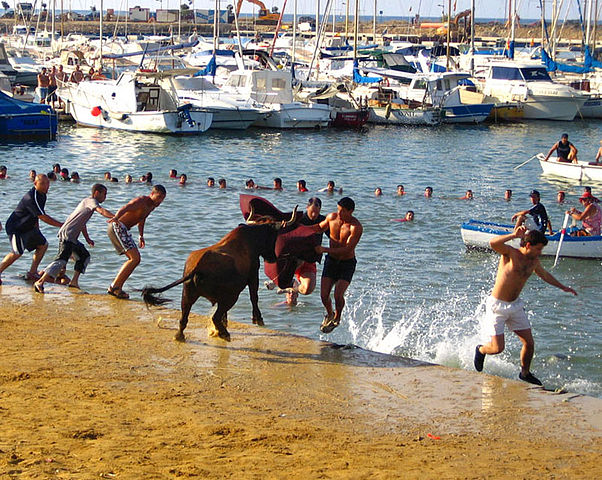
Bous a La Mar
In preparation for the bull event, a semi-circular bullring is set up in Dénia port next to the Fish Market. Sitting on the coast, the sea becomes part of the bullring itself, enabling both runners (to escape from the bull) and bulls (chasing runners) to jump into the water. Bous a la Mar is held twice a day. This festivity has been contested in recent years by advocates of animal welfare, requesting its prohibition to avoid animal suffering. The bulls are removed from water by boats towing them to safety.
This is not the only attraction of the festival. On the eve of the Day of Santísima Sangre (Holly Blood), there is a Correfoc a popular cultural event, in which a group of people dressed as devils parade through the streets of the town running, dancing and jumping amidst fireworks, while Procesión de la Santísima Sangre (Procession of the Holly Blood) brings a sense of solemnity to the historic centre. The programme also includes sports competitions, foodie contests, children’s events and much, much more.
Come to Dénia to make your own opinion and experience all these unique events for yourself!
